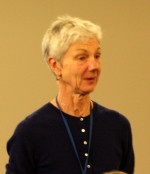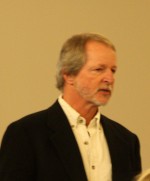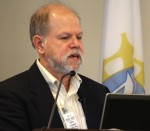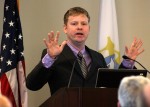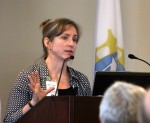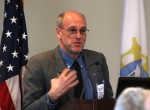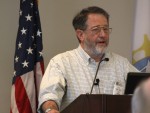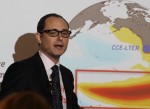The 2014 LTER Mini-Symposium, held on Friday, February 21, 2014, at the National Science Foundation (NSF) headquarters in Arlington, Va., highlighted LTER efforts to understand, anticipate, and adapt to global change through the process of scenario thinking and ecological forecasting. These two approaches expand theories of social-ecological change, vulnerability, resilience, and adaptability, and illustrate how long-term data are essential to understanding or predicting future environmental responses to natural and anthropogenic disturbances.
The symposium featured six presentation by LTER scientists (see abstracts at 2014 LTER Mini-symposium), and introductions by Saran Twombly, the NSF program officer for LTER, Scott Collins (LTER Chair/SEV) and David Foster (HFR).The presentations worked very well to demonstrate the importance of LTER research and long term datasets. Examples:
- Recent PhD student and post-doc, David Iwaniec (CAP) introduced fresh ideas on participatory modeling, whereby interested stakeholders could provide input to support planning in the city of Phoenix.
- Charles Driscoll (HBR) compared data from his early research at the height of the acid rain problem in the Northeastern U.S. with more recent data and demonstrated how the long term data contributed to subsequent remediation efforts in the region.
- Kathy Lambert (HFR) described her experience working with stakeholders to inform the decision-making for better management of the New England landscape.
- Gus Shaver (ARC) explained the unique aspects of Alaska research related to climate changes in disturbance regimes such as wildfire and thawing of the permafrost.
- Steve Carpenter (NTL) presented information and models showing scenarios of agricultural production, terrestrial biogeochemistry, hydrology and lake water quality based on stakeholder interviews, workshops, and using logical extensions of long-term observations.
- Emanuele Di Lorenzo (CCE) provided an animated talk using experiences of the California Current Ecosystem LTER to focus on reduced complexity models to better understand observed long-term changes in pelagic marine populations.
The forum was very well attended by LTER researchers and, in particular, NSF and other Federal agency staff. More than 100 people attended, probably the best turnout in the history of the LTER Mini-Symposium, thanks to a larger room. Although NSF internet network security prevented James Brunt (Chief Information Officer, LTER Network Office) from streaming the presentations live as planned, he was able to upload each talk while the next one was underway so that the presentations were only delayed by a matter of minutes. More than 25 people viewed the talks online the same day, and more than 150 within the first week. Both the video and PowerPoint presentations are available for viewing and download at: http://mtsms.unm.edu/Mediasite/Catalog/Full/b1f33529ae0b49bfb044ddb51426405321


 Enlarge this image
Enlarge this image